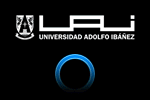TAIRA’s exhibition design not only presented stories of archaeological objects that are significant of the past, it also gave an account of the physical location in which this rock-art is located, at Loa’s Valley River, in the north of Chile. The proposed design experience was meant to highlight all the discoveries on the research conducted for more than a decade. The exhibition, through a form of an immersive display, was developed with different specialists to look for different scopes; spaces of participation, spaces of reflection and experience as well as spaces of immersive technologies that somehow enhanced different dimensions to "construct" different moments of performance, in order to gain the spectator’s attention who were visiting the museum. The main challenge was to “transport” the spacetime of TAIRA’s shelter to the exhibit space in Santiago, located at the Chilean Pre-Columbian Art Museum, and vice versa, at the same time, to transport visitors from the rooms of the museum to the spaces of TAIRA’s eave in the valley of the Loa River. The exhibition considered a narrative script from three different approaches: ethnographic studies, site documentation and archeological objects. These combined approaches unfolded through the different rooms and permitted to build up the space-time of TAIRA’s eave through the spaces of the museum. The data compiled in this exhibition was the result of several years of research done by a group of national and international researchers and professionals.
When the Chilean Museum of Pre-Columbian Art called to devise a way to present the rock art of TAIRA’s eave (rock-shelter), the response was to create an immersive space, a temporal environment of experience and reflection, to highlight the location of this eave and its significant role to the local community that lives around the area.
The challenge was not only to present significant archaeological objects with their stories, but to give an account of the physical place, where it is located (Fig. 1). The objective was to present a memorable experience where this art, its landscape and its people meet. In a way, the challenge was to «move» the space-time of TAIRA’s eave (Fig. 2), from the desert, to the spaces of the museum in Santiago. With this, the exhibition purpose was to transport the viewers, from the spaces of TAIRA´s eave located in the valley of the Loa River, to an immersive experience in the museum.
The main challenge was to catch the attention of visitors by explaining ancient practices of the Likan-Antai culture. This rock art piece is somehow frozen, and it is a testimony, a ritual on earth´s reproduction, linking the deities that govern the earth and the sky
Ver publicación

